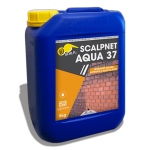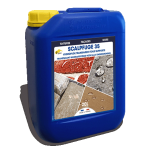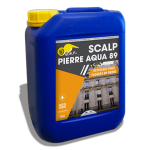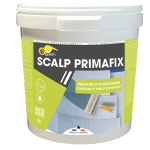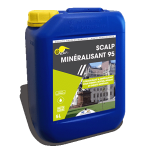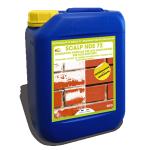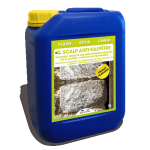SCALP CONSOLIDANT HYDROFUGE effectively hardens, solidifies and protects substrates like natural stone, limestone and siliceous stone, brick, concrete or mineral coatings, against water ingress, in a single operation. It is ideal in preventing damp and air pollution from damaging walls, floors and façades. It thus preserves their nature bond. This 2 in 1 product does not alter the appearance of the surface and perfectly penetrates the substrate.
Step 1
Mix SCALP CONSOLIDANT HYDROFUGE well.
Step 2
Apply SCALP CONSOLIDANT HYDROFUGE from the base upwards until saturation of the surface on a clean and dry surface in two coats at a minimum of 15 minutes interval.
Step 3
This is a permeating solution. It will be effective immediately after evaporation of solvents (after about 72 hours).
Discover SCALP CONSOLIDANT HYDROFUGE, the all-in-one solution for hardening, consolidating and protecting your surfaces against water infiltration. This mineralizing and water-repellent product is specially formulated to strengthen and preserve various materials such as natural limestone and siliceous stone, bricks, concrete and mineral plasters.
With SCALP CONSOLIDANT HYDROFUGE, prevent damage caused by damp and atmospheric pollution to your walls, facades and exterior floors, and protect the integrity of your materials' natural binder. This mineralizing, water-repellent consolidant acts as a protective shield, blocking water penetration and safeguarding the strength of your surfaces.
Suitable for use on façades, floors, historic monuments and degraded raw materials, SCALP CONSOLIDANT HYDROFUGE offers a reliable, long-lasting solution for preserving your architectural heritage. Protect your surfaces from the damaging effects of humidity and pollution, preserving their aesthetic appeal and robustness over time.
Choose SCALP CONSOLIDANT HYDROFUGE for optimum protection against water penetration while reinforcing the structure of your surfaces. Rely on this top-quality mineralizing and water-repellent product to guarantee the longevity and resistance of your materials.







